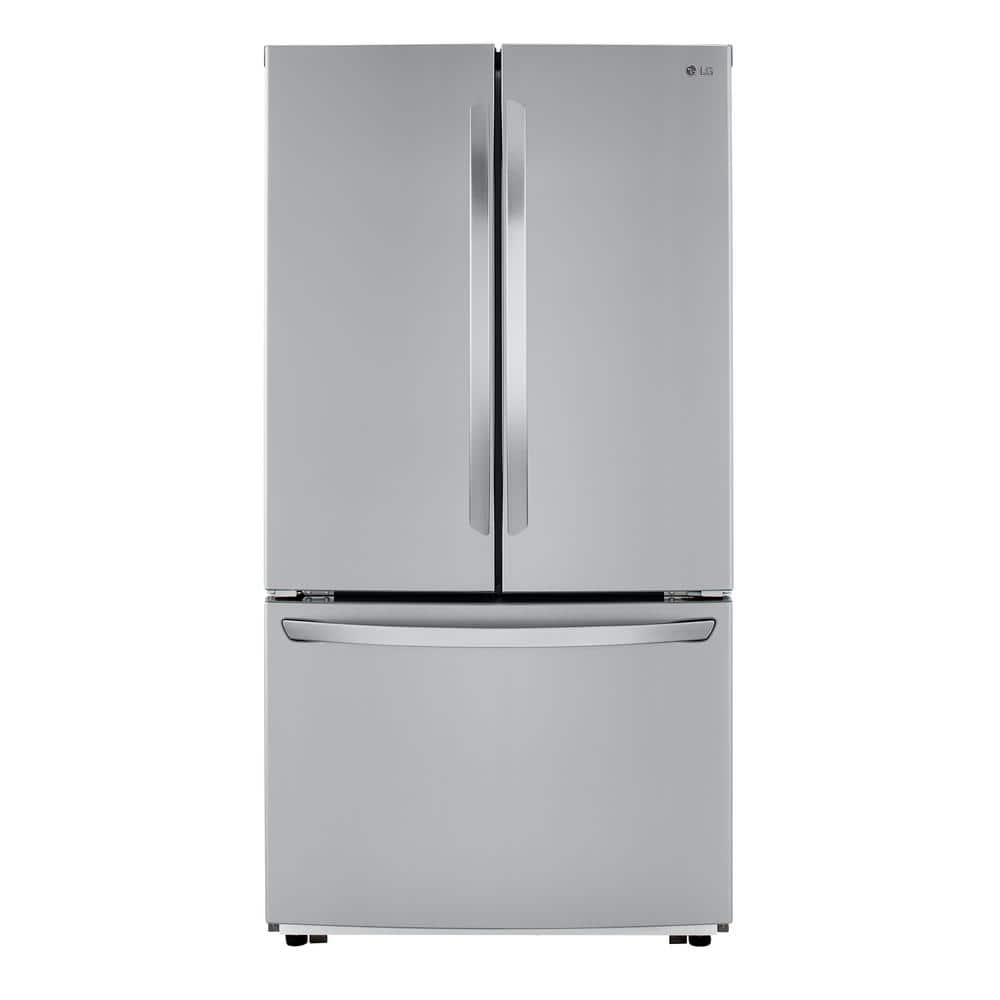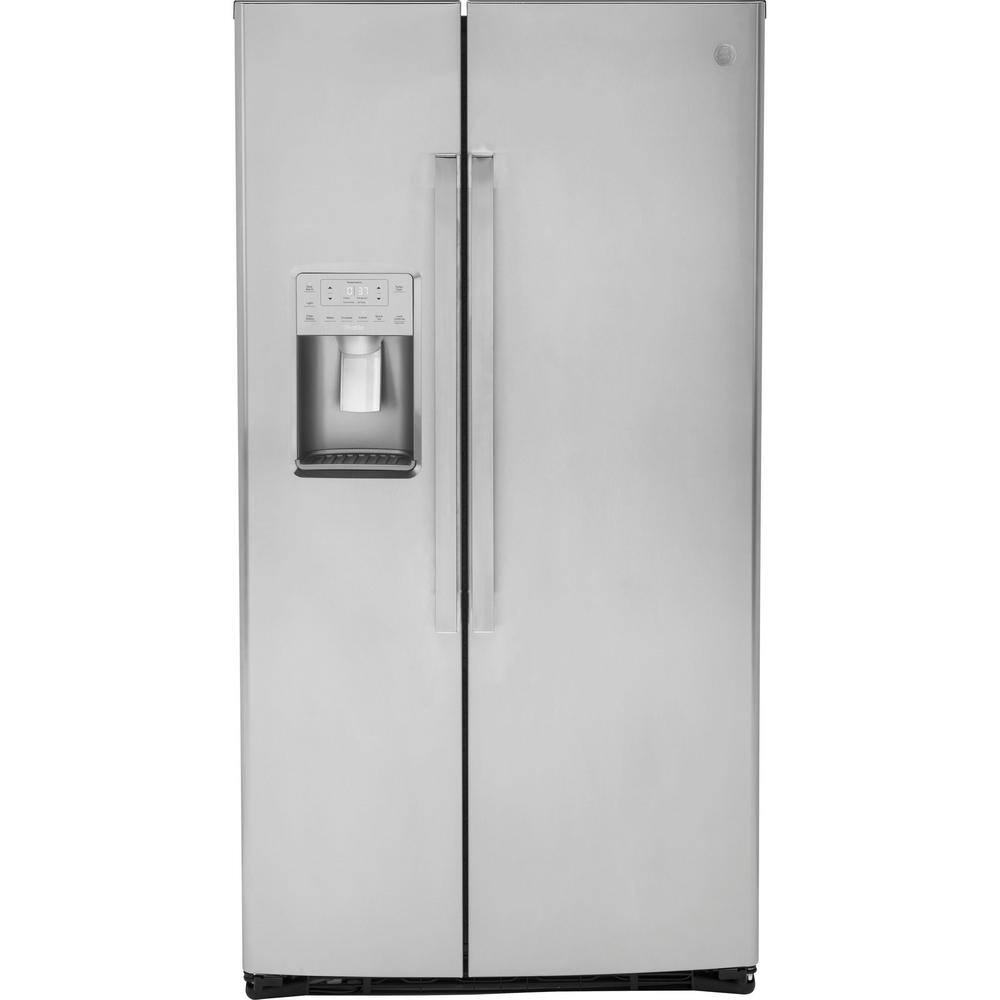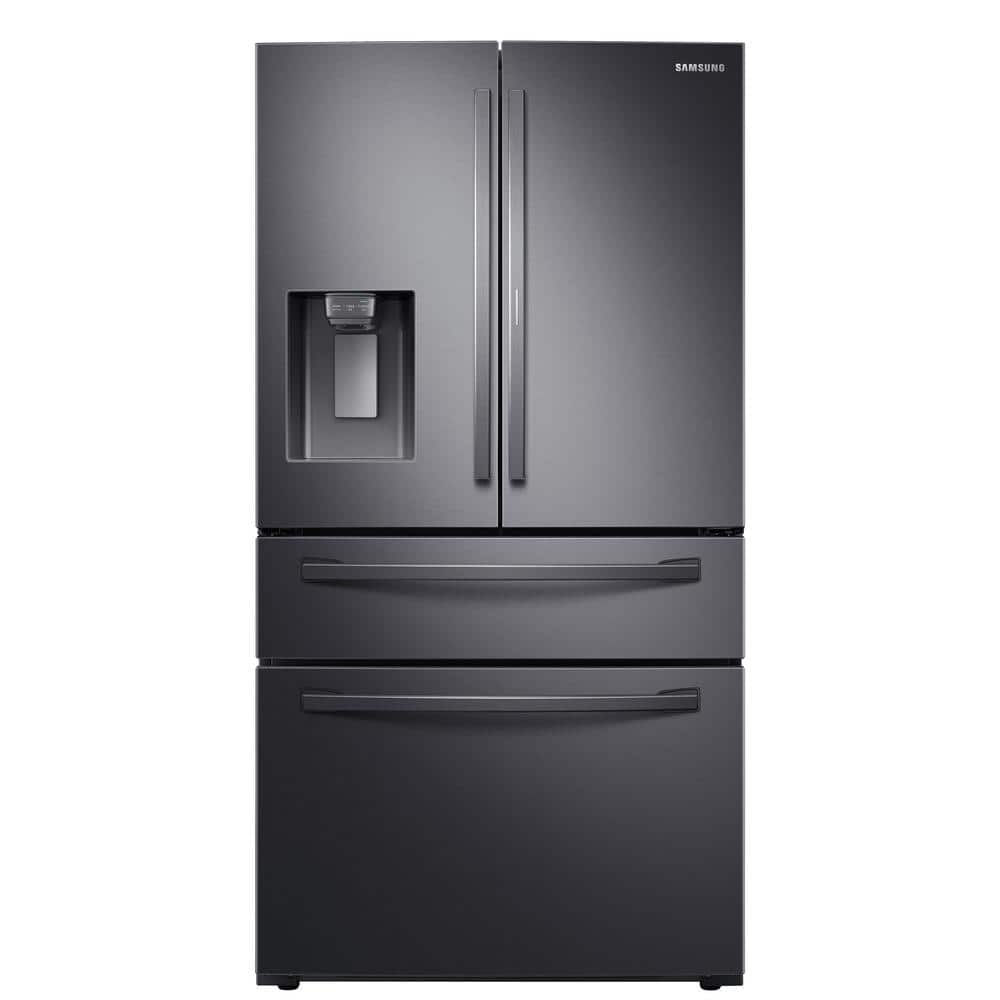Samsung 23 cu. ft. Smart Counter Depth 4-Door Flex™ refrigerator with Beverage Center and Dual Ice Maker in Black Stainless Steel Refrigerators – RF23A9671SG/AA | Samsung US
Smart Counter Depth 4-Door Flex™ refrigerator features the Beverage Center with both a water dispenser and AutoFill Water Pitcher, plus a Dual Ice Maker with Ice Bites, smaller nugget ice.
Press or pour – water two ways
Beverage Center provides quick access to refreshingly cool, filtered water two ways. Choose from an internal dispenser or a built-in pitcher that automatically refills, with the option to infuse with a flavor.
Ice your way
Enjoy your favorite beverage with your choice of ice. Select from cubed ice or Ice Bites that chill your drink faster.
Convert from fridge to freezer
Customize your lower-right storage space to be a refrigerator or freezer. With five adjustable settings, you choose what foods to store from fruits and vegetables to your favorite ice cream.
Superior organizational storage
With 23 cu. ft. of capacity, this spacious refrigerator is designed for convenience, offering unmatched flexibility and organization to store and access all your favorite foods with ease.
Seamlessly designed for a modern look
A modern, built-in look featuring a minimalist exterior with a signature flat door design and recessed handles that blend seamlessly into your kitchen.
Flexible freshness
A flexible storage drawer that is perfect for storing meats, veggies, or cheeses at their optimal temperature with two customizable temperature settings.
Fresh air, day after day
Keep the air in your fridge fresh day after day with a built-in deodorizing filter. The filter reduces odor from the air in your fridge, while UV technology continuously cleans the filter itself.
Powerful cooling performance
A premium cooling system featuring three evaporators for ultimate freshness and providing precise temperature and humidity controls in all three zones to help your food stay fresher longer.
Additional information
| Product Dimensions with Hinges, Handles and Door | 35 7/8" (L) x 71 7/8" (H) x 28 1/2" (D) |
|---|---|
| Product Dimensions without Hinges and Door | 35 7/8" (L) x 70 3/4" (H) x 24" (D) |
| Product Dimensions with Door without Handles | 35 7/8" (W) x 71 7/8" (H) x 28 1/2" (D) |
| Shipping Dimensions | 38 1/4" (L) x 77 5/8" (H) x 36 1/4" (D) |
| Net Depth with Door Handle | 28 1/2" |
| Net Height with Hinge | 71 7/8" |
| Net Height without Hinge | 70 3/4" |
| Net Depth w/o Door Handle | 28 1/2" |
| Width | 35 7/8" |
| Product Weight (lbs.) | 313.1 lbs |
| Shipping Weight (lbs.) | 335.1 lbs |







by Andrew
I can’t believe how much food we have been able to get into this refrigerator. It’s downright cavernous. It also looks great in the kitchen, and is the focal point of the room. It has a host of cool features, including the dual ice maker (our favorite thing), flex compartment that can be fridge or freezer as desired, auto-fill water pitcher in the beverage center, oversize bins in all of the doors, UV deodorizing function, door alarm, and on top of all this, it works with the SmartThings app! It runs fairly quietly, with the loudest part being when it dumps fresh ice into the bins. Even that isn’t all that loud (our cats would disagree). The stainless finish does show fingerprints, but a dry microfiber cloth wipes them right off. We couldn’t be happier with this fridge, unless the ice maker dumped out money instead of ice cubes. We have the Samsung washer and dryer set, which we love as well, and this fridge has only raised our opinion of Samsung appliances.
by Kimi
This is a gorgeous appliance! Sleek, modern, and ultra cool. There is so much space in this fridge, that it took me a bit to fill it up! It also easily hooks up to my existing Samsung SmartThings app, so I can control the fridge via WiFi, just like my Samsung laundry pair.
The flex compartment on the lower right is a big bonus, especially if you happen to need some extra fridge space, or want to set part of the freezer at a warmer temp for keeping ice cream soft. The main con about the freezer is that you can’t store anything big in it, like a long package of chicken or extra large pizzas. The other con is that it begins to frost up quickly, if you have the door open for more than a few seconds.
The beverage center is accessed through the partial door on the top left, without having to open the rest of the fridge. I use the auto-fill pitcher often. The water in the pitcher is colder than the water that comes from the regular dispenser. I haven’t tried the infuser in the pitcher.
My fave part of this fridge is the dual ice maker! One bin gets large cubes and the other gets bite-sized cubes. The unit makes a lot of ice.
All in all, this is a great fridge, and we love it! I hope it lasts a long time. I’ve already been telling everyone about it, and showing off all the neat features that it has. At least one person has said they want one. This fridge makes my third Samsung appliance (laundry pair is the other two), so now I need the range, microwave, and dishwasher to complete my set!
by Manny
it’s only been two weeks, so this review in no way attests to the product’s reliability. we really like the refrigerator as it is very modern and clean looking. the twin ice maker is great and keeps churning out more ice than i can use, which wasn’t the case with my prior door amounted ice dispenser. the freezer compartment is nicely divided into two sections with multiple drawers and shelves, which means you don’t have to pile food on top of each other, like in a pull-out drawer. i also like the beverage section, which allows you to access it using the outside door, rather than the full door. i definitely recommend it, now let’s hope it lasts a long time, unlike my last lg fridge, which completely failed at 3 years.
by Malron
There are so many things to love about the Samsung 23 cu. ft. Smart Counter Depth 4-Door Flex™ Refrigerator with Beverage Center & Dual Ice Maker RF23A9671SR/AA – Stainless Steel.
The beverage center with fruit infused water container is my all time favorite. The different size Ice cubes is my second favorite feature. The roominess of the top refrigerator Portion is well lit, and has enough space for everything.
by James
This fridge has everything that you need in a fridge and more. The built in filtered water pitcher gives you fresh cold water throughout the day. My favorite feature in the ice machine that has cubed an mini ice. My wife likes how you can set different settings in the drawers for best results with certain fruits and vegetables. Cleaning this fridge is a breeze inside and out.